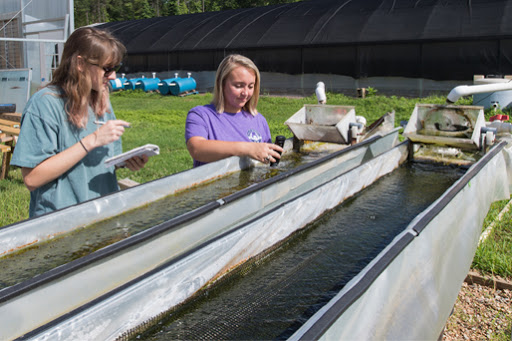Contaminant Control
Contaminant Control
Auburn researchers are exploring the possible health risks to humans and wildlife
 Each day, we’re exposed to thousands of fluorinated synthetic compounds used in many everyday products. These compounds have been around for more than half a century and are used in a wide-ranging number of industrial processes around the world.
Each day, we’re exposed to thousands of fluorinated synthetic compounds used in many everyday products. These compounds have been around for more than half a century and are used in a wide-ranging number of industrial processes around the world.
Because of the nature of these chemicals, they’re extremely tolerant to heat and resistant to degradation. While those qualities are great for the products they’re intended for, they can have unintended consequences when released into the atmosphere or aquatic systems.
That’s why Auburn University researchers, led by civil engineering associate professor Joel Hayworth, are conducting research on these contaminants to examine the possible health risks to humans and wildlife as part of the recently announced $5 million Presidential Awards for Interdisciplinary Research program, or PAIR, established by President Steven Leath.
Along with Hayworth, this interdisciplinary effort combines the expertise of faculty and researchers across the university, including David Blersch, biosystems engineering; Dean Schwartz, Jennifer Panizzi and Vinicia Biancardi, veterinary medicine; and Jim Stoeckel, agriculture. The team was awarded $150,000 over two years to study the behavior, fate, ecological and human health consequences, and mitigation of emerging contaminants of concern.
"These are very complicated chemicals. They get into the environment in all kinds of ways. They can be released into the atmosphere, they can be discharged directly into aquatic systems, they can move through groundwater systems and they can be picked up by organisms, many of which are mobile," Hayworth said. "The complexity of how they’re introduced into the environment and how they move around is one of the unknowns. What little we know is alarming."
Although there have been some studies on the effects to humans and wildlife, the consequences are not well understood. For the past several years, Hayworth has been working on and near the Gulf Coast to study the impact these contaminants are making on the environment.
"What is particularly alarming to me are the genetic effects. If you have a chemical that can change the way an organism behaves, those effects can be transferred into succeeding generations," Hayworth said. "It may look the same, but its behavior has changed. This is unnatural selection where we have no control. These chemicals are doing this for us and they’re going to be around forever."
